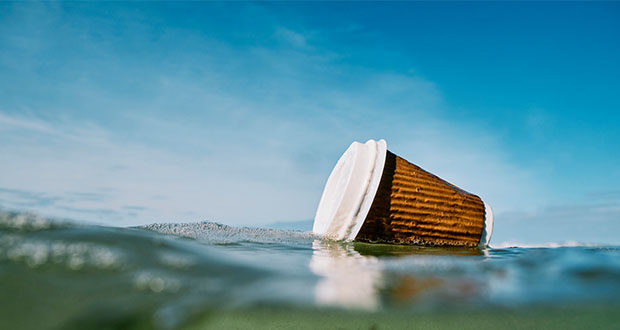It’s around a cup of coffee at Victoria University that Dr Yanni Bouras and his team decided to develop a way to transform takeaway coffee cups into concrete, with the aim of reducing landfill waste.
Bouras, a lecturer in built environment from VU has always been a coffee lover, drinking up to three cups a day, alternating between short blacks, lattes and even iced coffee when the weather permits.
Turning coffee cups into concrete was a way for him to combine his love for the beverage and dealing with the guilt of using takeaway cups that are often hard to recycle.
“We were aware of the issue with coffee cups, the volume that we're disposing of in landfill and the fact that they are difficult to recycle. This motivated us,” Bouras told Campus Review.
As a nation, Australia has a soft spot for coffee, with three in four inhabitants consuming at least one cup of coffee per day, while 28 per cent have three cups or more daily.
According to Sustainability Victoria, the majority of disposable coffee cups can’t be recycled through the paper recycling channel as they have a plastic liner.
In addition, Australia does not have the capacity to recycle “compostable” cups as the country can’t process the cups effectively.
It’s a constantly growing issue when the number of discarded single-use disposable cups of coffee reaches 2.7 million every single day.
In order to reduce the number of disposable cups in landfill, Bouras and his team decided to look at substituting a proportion of the sand present in concrete with the recycled coffee cup material.
Concrete consists primarily of four ingredients: water, cement, a gravel or a coarse aggregate, and sand, Bouras said.
The team is currently looking at what proportion of the sand they can take out and replace it with materials from processed or recycled coffee cups.
“We have done some conceptual testing, and looked at some key material properties including compressive strength, thermal conductivity, and also the workability of the concrete.
“We're still very much in the research and development phase but we have seen promising results,” Bouras said.
So far, the VU team has conducted some preliminary testing and found that between 550 and 700 cups could be used per cubic metre of concrete to replace 10% of the sand in the concrete batch.
In addition, by replacing 10% of sand with takeaway coffee cups, the team has seen an actual reduction in carbon emissions associated with the production and development of the concrete mix, an additional benefit according to Bouras.
“There's a lot of benefits for the environment with this type of research. If it were to go into practice, what we will be seeing is a reduction in coffee cups sent to landfill.
“And with that, as we're constructing with less sand in the concrete, we're extracting less resources from the earth, which is an additional benefit.”
In terms of practical use, the “coffee-concrete” shows a reduction in strength but better thermal resistance of the material. Bouras said this could potentially be used in non-structural or low-stress applications and also as an insulating type product.
“It could be used on things such as footpaths or curbs where they don't experience a high loading or as a render on the facade of a building, or pavers in small retaining walls as a concrete type Besser block.”
Meticulous about the environment, the team aims to conduct further tests to evaluate the key material properties of the mix and optimise it for future real-life applications.
“We need to verify a range of different strength parameters, the workability of the mix, the durability properties, things like how does it react to water and exposure to chemicals?
“We want to ensure that the product itself doesn't give off any micro plastics or leachate, as we call it, and harm the environment that way,” Bouras said.
“Our ultimate goal is to really see this applied in real life practice. We want to develop the material to a commercial and industry standard where we can see it applied in real life projects.”
As a teenager, Bouras developed a passion for civil engineering after doing his Year 10 work experience in a civil construction company.
“It really opened up my eyes, it gave me a taste of what engineering was all about, and from there I knew that I wanted to pursue engineering as a career.
“I never thought I would end up as an academic and in research, but I was fortunate enough to be offered a summer graduate programme, and that was what really inspired me to pursue research as a career.”
For Bouras, the real life application of the coffee-concrete project will allow him to pursue his teenage dream of civil engineering and see his research applied.
“It has real practical potential to be applied in real life and for us as researchers, it's always exciting to actually see what we research being developed.
“I think that's definitely a big driver for a lot of academics.”
In order for Bouras and his team to see a real-life application of their research, a partner industry or a local government willing to support the project will be needed, which the team is already looking for.
“We're always trying to reach out and partner up either with builders or councils or anyone in the construction industry.
“It is always difficult, but there is a lot of interest with this particular project as a lot of people love coffee. We're hoping shortly that we can secure some partnerships,” Bouras said.
Do you have an idea for a story?Email [email protected]
 Campus Review The latest in higher education news
Campus Review The latest in higher education news

